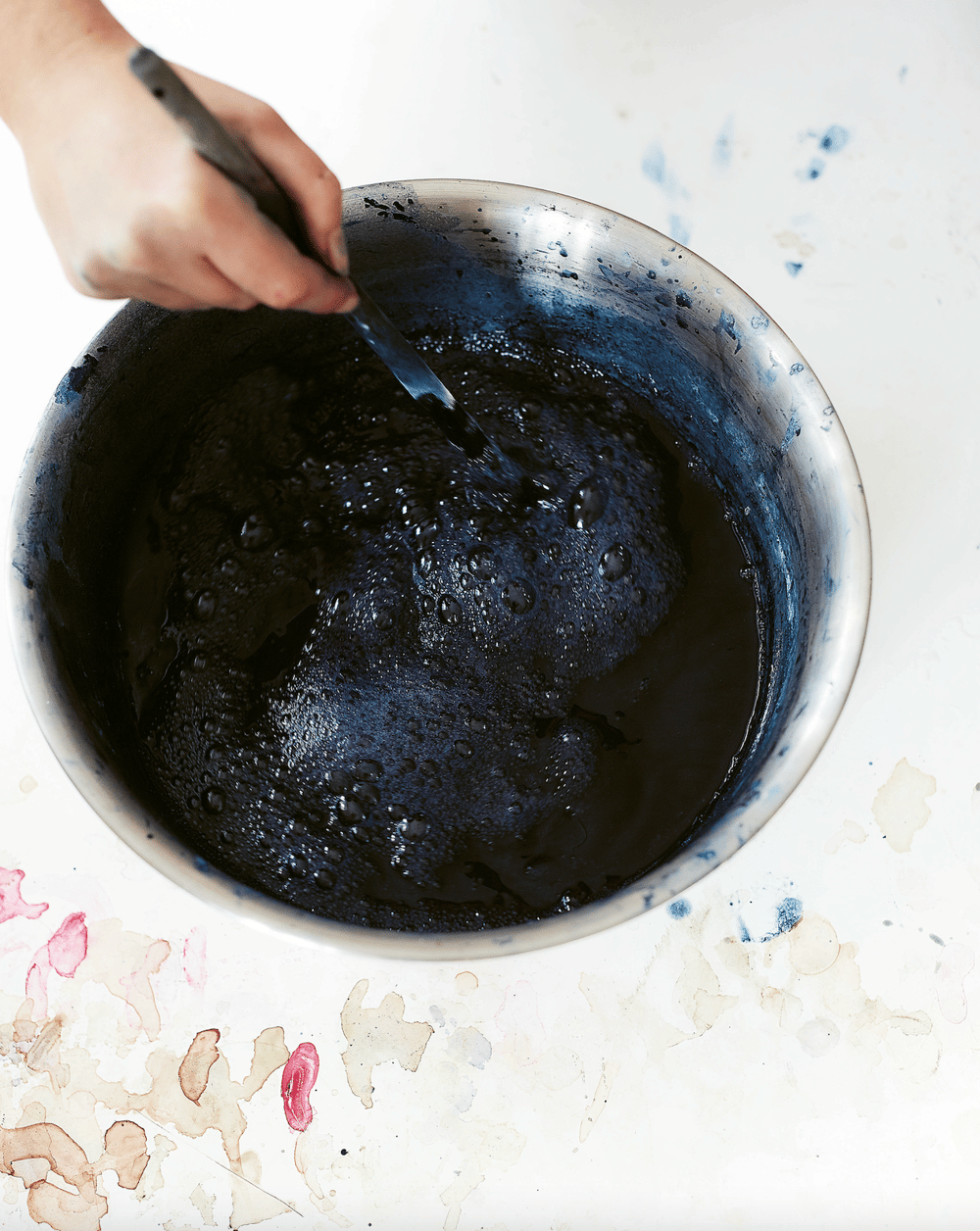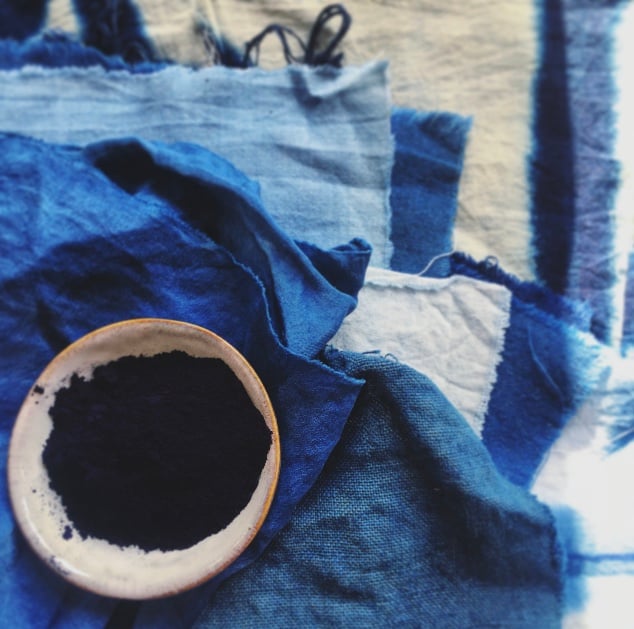Organic Indigo Extract Powder
£30.00

Indigo (Indigofera tinctoria)
The most mystically charged of the natural dye colours. The colour of the sea, the sky and of our beautiful living planet. Its bluey charm concealed inside green leaves, and transformed only by a certain alchemical knowledge and practised skill. It has captured the imagination of many.
Colours:
A layered dye which gives innumerable shades of blue from the lightest icy blue wash to the deepest darkest deep-sea navy and verging on black.
Ingredients:
Indigofera tinctoria extract powder
Info/about:
The only source of natural colourfast blues.
Indigo gets its name from the country India, the earliest major centre of natural indigo production, from where it found its way to Greece and the Roman empire.
It is one of the most ancient and rare of natural dye colours. Believed to have been in use as far back as the 3rd century bc and possibly earlier.
In ancient Mesopotamia, the cuneiform tablet, discovered in 600 BC, holds a recipe for a layered blue dye.
It was used as a pigment for making the paints by the ancient Egyptians and Romans, and used in medieval manuscript illuminations, such as Rubens’ masterpieces during the late 16th to early 17th centuries.
Indigo refers to the dye compound, which is contained within over 200 different species of indigo-bearing plants. The most commonly used for commercial purposes is the indigofera, which is native to the tropics. Japanese indigo (strobilanthes cusia) is another popular variety, which grows in cooler climates, such as Japan. In South and Central America you will find l.suffructicosa (anil) and in Europe, our native species, although somewhat paler in colour, is Woad.
Both Woad and Indigo industries collapsed in the early 20th century, once chemists had learned to synthesise their blue pigment.
Today, only some small scale natural indigo farming exists, for artisan natural dyers. While 17,000 tonnes of synthetic indigo is produced each year, adding to the degradation and contamination of water, soil and food supplies and the loss of natural habitat.
This is almost equivalent to the amount of natural indigo dye which was produced commercially in the 19th century. Is it possible that we may revert to investing in our previously tested systems of natural blue dye production, to avoid further environmental destruction?
Recipe:
Indigo is a “vat dye” and unlike other natural dyes which fall into the categories of “adjective”, “substantive” or fugitive”, indigo is not soluble in water. It is soluble instead, in an alkaline environment in which the oxygen has been removed. It therefore requires a slightly more complex process to achieve its beautiful hues.
I recommend using Michel Garcia's 1-2-3 fructose vat recipe which can be found in my book. This vat uses only the non-toxic, natural ingredients: Slaked lime, fructose sugar and indigo.
For a medium to dark blue:
500g fibre = 25g indigo / 50g cal / 75g fructose
Fastness:
high colour fastness
Mordants/Modifiers:
No mordant is required as indigo is a substantive dye.
Ph sensitivity:
Very stable
Origin:
Sourced from Southern India.
Produced using systems approved by the Global Organic Textile Standard (GOTS 4.0)
Extraction Technique:
Extracting indigo from its plant origin requires a complex fermentation process, which is labour and time intensive. It has to be extracted in water in its colourless “indican” state, then fermented and finally mixed with lime and pressed into “cakes” and sold in powdered form.
Transport:
Air courier from India to UK
Shipped from Botanical Inks in Devon via Royal Mail
Packaging:
Packaged in natural compostable food grade waxed paper bags and placed inside a biodegradable corn starch mailer bag - safe for health and environment.

